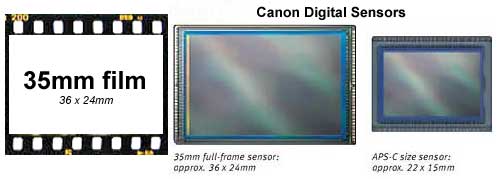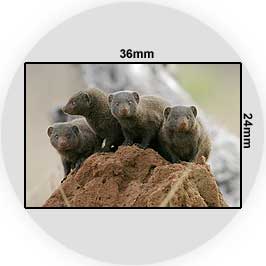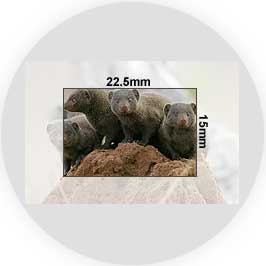Contact Details: Scotch Macaskill, Dirt Road Traders, Currys Post Road, Howick, KwaZulu-Natal, South Africa. Tel: +27 (0)82 578 2329. Privacy: Your privacy is guaranteed. See our Privacy Policy for more. This site accepts advertising and other forms of compensation - see Disclosure and Advertising for details. Site updated: 2022. Copyright © 2002 - 2022 Scotch Macaskill

| ||||||||||
|
||||||||||
| See Also: |
Impact of Crop Factor on Canon EOS 50D Digital SLRThe Canon EOS 50D digital SLR camera is one of Canon's "prosumer" models that is affected by the crop factor (also known as lens magnification factor or focal length conversion factor).Note that the other prosumer models (the Canon EOS 60D plus the older EOS 40D, 30D, and 20D), the entry-level "Rebel" models (300D, 350D, 400D, 450D, 500D, 550D, 600D and 1000D), plus the Canon EOS 7D, are also affected by the crop factor, in the exact same way as outlined below. The impact of the crop factor on the 50D (and the other Canon models mentioned above) is that all Canon EF and EF-S lenses act as if their focal length has been increased by 1.6x or 60%.
This apparent increase in focal length of 60% also applies to any Canon-compatible lenses such as those produced by Sigma, Tamron, or Tokina when fitted to a 50D. We talk of "apparent" increase in focal length, because the actual focal length of the lens obviously hasn't changed -- a 50mm lens remains a 50mm lens, no matter the camera body. What's happening is that the sensor on the 50D is smaller in size (22.5 x 15mm) than a 35mm negative or full-frame
sensor (36 x 24mm). The smaller sensor is referred to as an APS-C format sensor or sub full-frame sensor -- see size comparison below:
To get all the critters to fit in the frame of your 50D, you either have to move back, or fit a lens with shorter focal length. 
If the picture above left was taken at a focal length of 320mm on a full-frame digital camera, you can get all the same elements in the frame of your 50D using a 200mm lens -- see right. This gives you a huge advantage if you're shooting sport or wildlife with your 50D, as you can use shorter focal length lenses and still get your subject to fill the frame. This means that a fast zoom lens like the Canon EF 70-200mm f/2.8L IS USM on the 50D is similar to using a 112-320mm f/2.8 zoom lens on a 35mm film or full-frame digital camera. The downside is that wide angle lenses are effectively "lengthened" by 60% when fitted to your 50D. So the outstanding Canon EF 16-35mm f/2.8L II USM ultra wide angle zoom now mimicks a somewhat mundane 25.6-56mm standard wide angle zoom when used with a 50D, losing the ultra wide impact and "wow" effect. It's important to remember that the crop factor still applies to Canon's EF-S lenses, introduced specifically for EOS digital SLR cameras. However, these lenses do provide owners of Canon 50D cameras with additional wide angle options. Below is a line-up of EF-S lenses for use with the 50D, together with the equivalent focal length in brackets:
You'll notice that all but the 55-250mm and the 60mm macro are between 10mm and 18mm on the wide side of the zoom range and are clearly intended to counter the crop factor and provide more wide angle options for users of Canon 50D bodies. Even though both the EF-S 10-22mm f/3.5-4.5 USM and EF-S 17-55mm f/2.8 IS USM are highly rated by users, there are no professional class L-series lenses within the EF-S range. For professional photographers using 50D cameras this is a disadvantage, particularly if their work involves a good deal of wide angle shooting. The opposite holds true for those who use mainly telephoto lenses, as all the L-series tele zooms and prime lenses when used on the 50D have the advantage of a 60% boost in equivalent focal length. Below are popular Canon telephoto zoom and prime lenses with their equivalent focal length when used on the EOS
50D:
Return to Canon Lens Reports |
|||||||||
|
|
||||||||||


